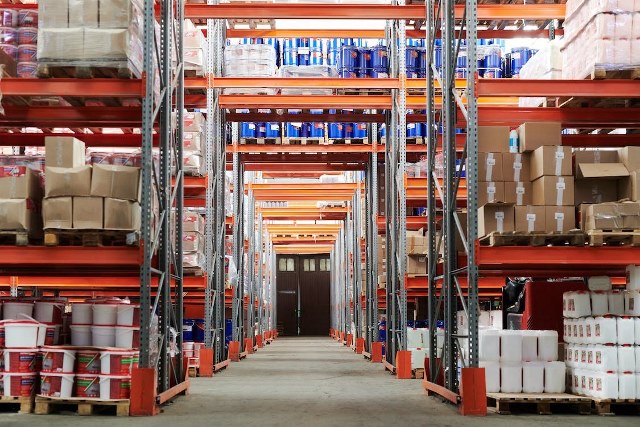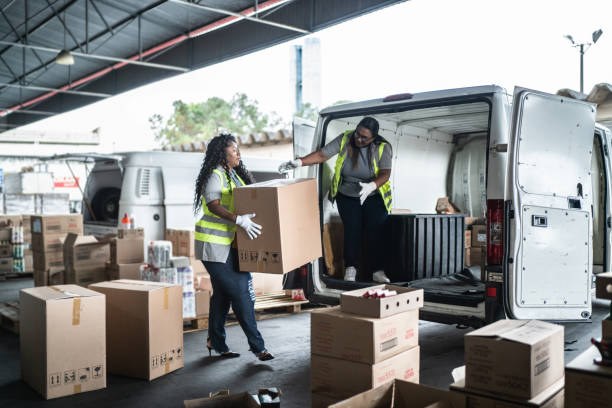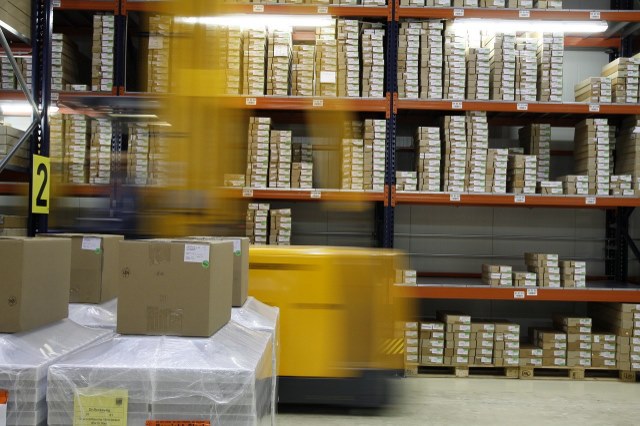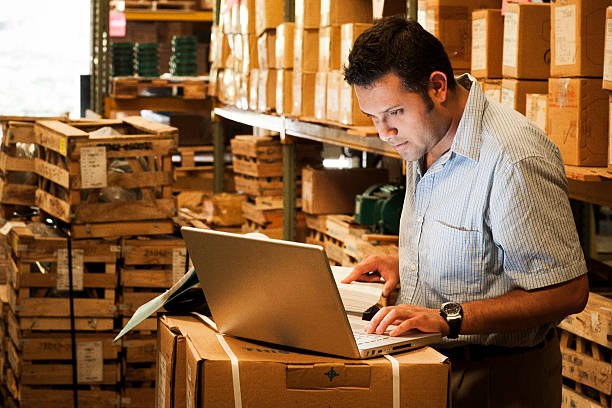5 Steps to Modernizing Your Warehousing and Distribution Services

If you want to optimize your warehouse management process, there’s a need to evolve with technology. Technology has been revolutionizing how warehouses and distribution centers carry out practices.
To stay competitive, you need to embrace technology and use it to your advantage; something that 80% of companies in logistics, retail, and warehousing are planning. Besides, with customers’ increasing purchase of goods around the clock, your warehouse may experience exponential demand.
And indeed, to meet this demand, you must enhance your warehouse management system. That entails using custom courier solutions, shipping and fulfillment solutions, and barcodes. Through this, you’ll achieve a modern warehouse and eliminate stockouts, and human errors, among other common issues in warehouses.
To get started in modernizing your warehouse, follow these five steps.
1. Implement a Warehouse Management System
An efficient warehouse management process starts with employing a warehouse management system. But what is a warehouse management system? Put simply, it’s a powerful software solution that enables effective inventory management, streamlining processes, and gaining real-time visibility into your warehousing and distribution operations.
Additionally, a WMS helps automate repetitive tasks, such as order processing and pick-and-pack operations, increasing efficiency and reducing human errors. This improves customer service and puts you ahead of the competition.
Here are several ways to modernize your warehousing and distribution activities with warehouse management systems.
Assess Your Current State

Before making any change, evaluating your current state is logical, which can then advise better decisions. Assess the state of the existing warehouse management systems, determine your areas of weakness and strength, and take fundamental actions accordingly. Besides, it’s worth noting that distribution facilities have varying capacities, hence different feature needs.
Typically, a small warehouse will require a few tools to automate practices, whereas a more extensive distribution company requires an all-in-one suite. Thus, evaluating your warehouse state is critical to determine what you need to modernize your practices fully.
Automate Data Collection
As you know, warehousing and distribution practices revolve around inventory management and data collection. You must document every activity, whether in, stock out, cash received, etc. However, while the process can boost productivity, doing it manually only increases human errors and wastes more time.
That’s why it’s worth employing WMS for data entry. OCR scanners & paper, RFID tags, and barcodes are some of the data-capturing tools you can use to automate data collection, thereby minimizing human interference.
Go Mobile
As tech advances, you can monitor your warehousing activities even when you’re not physically in the warehouse. You just require a tablet, phone, or laptop to access your WMS and scan, track, and plan your distribution facility more efficiently.
In addition, going mobile makes it possible to monitor employees’ performance, thus aiding your decision regarding promotion, merit, etc. At its baseline, going mobile will facilitate the migration of WMS to an electronic device.
2. Collaborate with B2B Couriers

If your warehouse involves b2b transactions, collaborating with custom courier solutions can lead to smoother and more tailored shipping solutions. This is because b2b couriers understand business-to-business deliveries’ unique requirements, including sensitive documents, oversized shipments, and time-critical orders.
Generally, this will allow you to concentrate on other critical aspects of distribution and warehousing, while b2b couriers provide more personalized solutions. Ultimately, this will boost your growth since a b2b courier can deliver professional services to secure deliverables compliantly and timelier.
In other words, you should go for a reliable courier with a tremendous reputation to achieve such results. In addition, work with couriers that can provide other professional services such as customs clearance for international shipments and House Bill of Lading (HBL).
3. Improve Warehouse Layout

The warehouse layout is just as crucial as the warehouse itself, along with its practices. As such, it’s critical to spruce it up in your pursuit of warehouse modernization. Generally, the key reason for improving the layout is to maximize the utilization of the available space, thereby increasing efficiency and a smooth running of distribution practices.
On the contrary – if your distribution center’s layout is disorganized, your employees can waste more time trying to locate various items needed by customers. And in reality, customers value their time and want fast yet quality services. A good customer experience can lead to a 2-7% increase in sales and a 1-2% rise in profits.
While improving your layout, consider placing the fast-moving goods and the highest volumes closest to the dock doors. This way, you’ll save more time and streamline efficiency.
4. Streamline Warehouse Inventory Management

Efficient warehouse inventory management is crucial for a smooth and organized operation. This involves:
- Adopting inventory best practices.
- Integrating inventory management with WMS.
- Tracking and automating updates.
To streamline operations, you should adopt inventory best practices such as regular stock audits, categorizing products based on demand, and using the “First-In-First-Out” (FIFO) method for perishable goods.
Additionally, integrate your inventory management system with the WMS for more efficient, accurate tracking and automatic updates. In turn, this leads to better stock control, thus reducing the risk of stockouts or overstocking. It also allows sound decision-making, allocating resources more effectively and improving efficiency.
5. Invest in Enterprise Ecommerce Solutions

You want to modernize your distribution facility, which only means you must cope with the prevailing trends. One evolving trend is the growth of the ecommerce market due to its convenience and flexibility. Its market volume is anticipated to reach $5.6tn between 2023 and 2027 and an annual increase of 11.16% CAGR rate.
Investing in enterprise ecommerce solutions is essential for expanding your market reach. An advanced ecommerce platform offers features like personalized customer experiences, secure payment gateways, and seamless integration with your WMS.
Conclusion
Indeed, modernizing your warehousing and distribution services is imperative to stay competitive and meet the expectations of the Canadian market. While the industry is experiencing constant changes due to new trends and technologies, you only have the option to embrace and leverage.
Implementing a Warehouse Management System, streamlining inventory management, investing in enterprise ecommerce platforms, and collaborating with B2B couriers are some of the decisive steps you should employ.
They will modernize your distribution facility and empower you to thrive in this digital age. Now is the time to implement these strategies and achieve your business goals.

